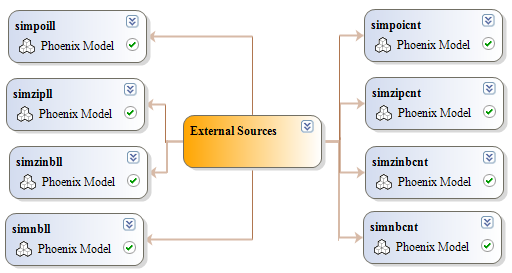Exploring Event, Count, and LL Statements
A series of 4 models (Poisson, zero inflated Poisson, negative binomial, zero inflated negative binomial) have been implemented using the count statement and in equivalent form using the LL statement (8 models in all). The project containing these models is called CountLL_ModelExamples.phxproj and can be found in …\Examples\NLME. The PML model code provided in these examples can be modified for application in your projects.
The four datasets used in this example project include:
simnbnp: data for the negative binomial model
simpoinp: data for the Poisson model
simzinbnp: data for the zero inflated negative binomial model
simzipnp: data for the zero inflated Poisson model
The eight Maximum Likelihood Models objects include:
simpoicnt: A simple count statement version of a Poisson count model.
simpoill: A simple LL version of Poisson count model.
simzipcnt: A count statement version of zero inflated Poisson count model.
simzipll: An LL statement version of zero inflated Poisson count model.
simzinbll: An LL statement version of zero inflated negative binomial count model.
simzinbcnt: A count statement version of zero inflated negative binomial count model.
simnbcnt: A count statement version of negative binomial count model.
simnbll: An LL statement version of negative binomial count model.
All of these models involve a linear dependence of log l on a covariate “dose”.

There is some additional information at the top of the PML code for each model. In the Settings tab, click Model. The PML code is displayed for viewing/editing.
The example project called TTEHazard_ModelsExamples.phxproj, found in …\Examples\NLME directory, illustrates the use of the event statement in a Time To Event (TTE) hazard context.
There are really two observations
•whether an event happened
•the time stamp of the event (or end of the observation period, if no event occurred), which is taken to be the time of the cens observation.
In the example project, the hazard function haz (which is a constant in the example) is integrated over the current period by a hidden differential equation dcumhazard/dt=haz, which yields a survival probability of S=exp(-cumhazard).
The likelihood (if an event is observed) is S*haz and S (if an event is not observed). This likelihood computation and the differential equation computation are automatically invoked by event(cens,haz).
